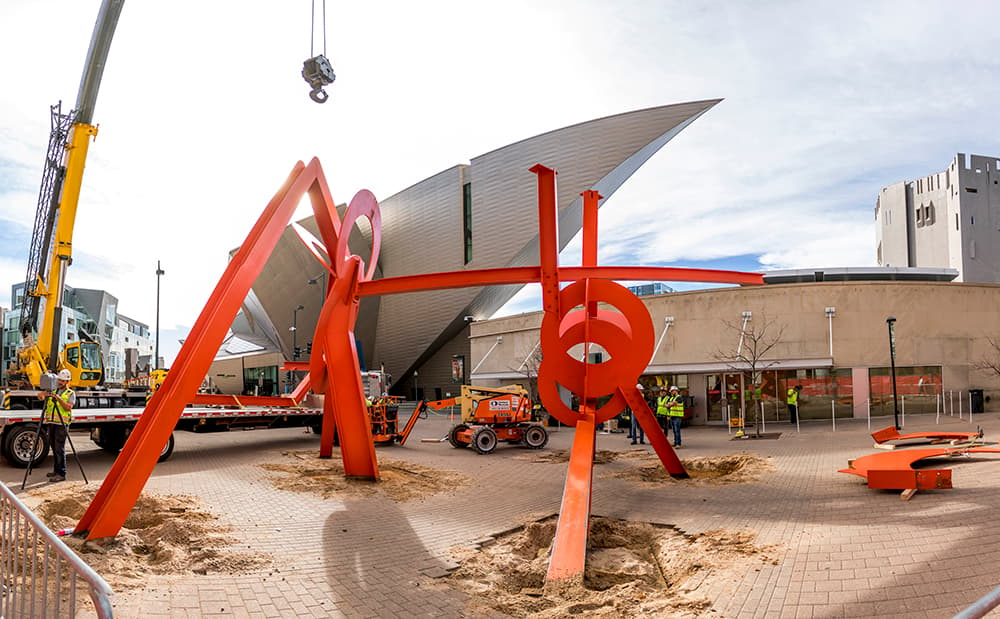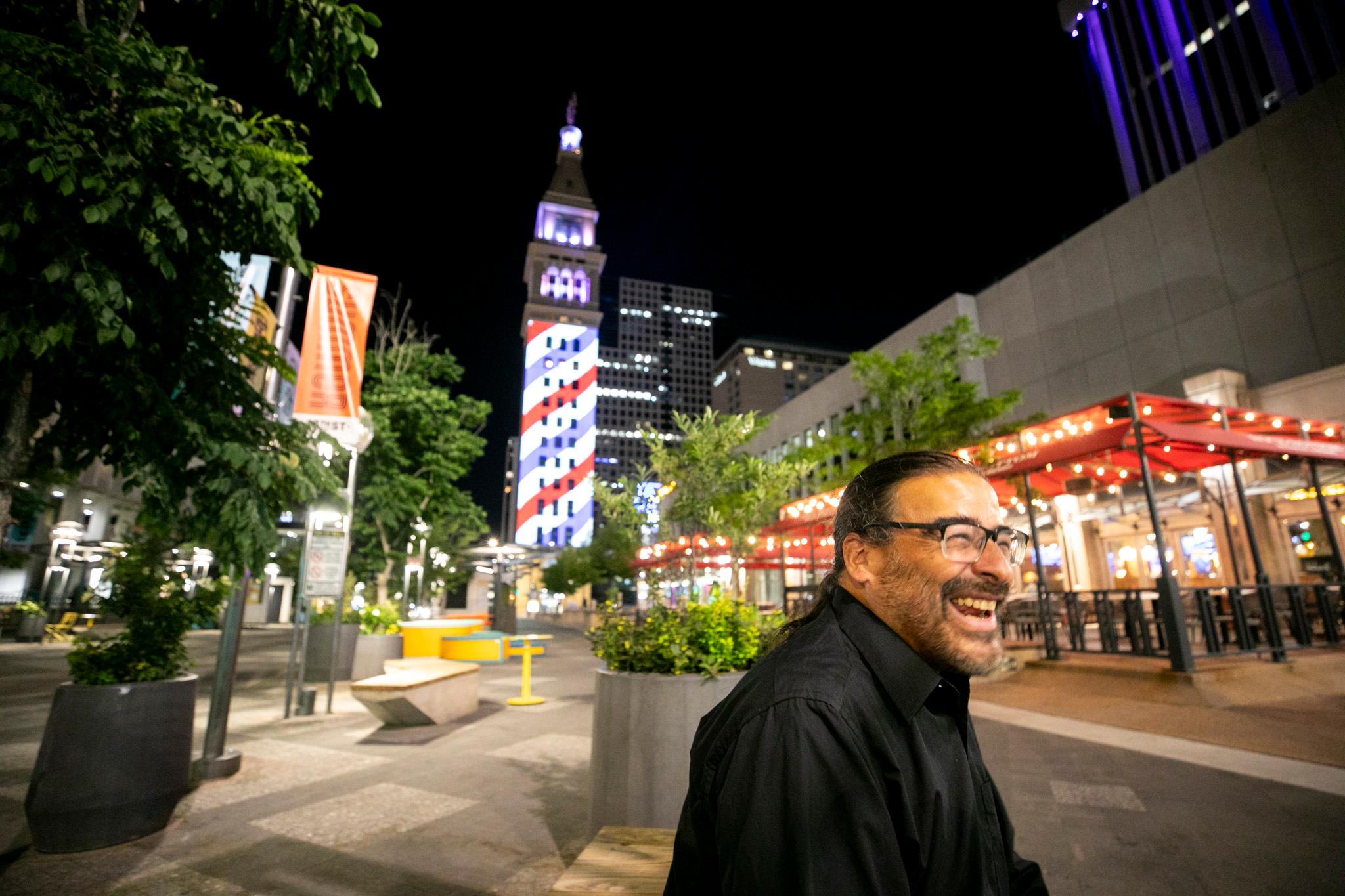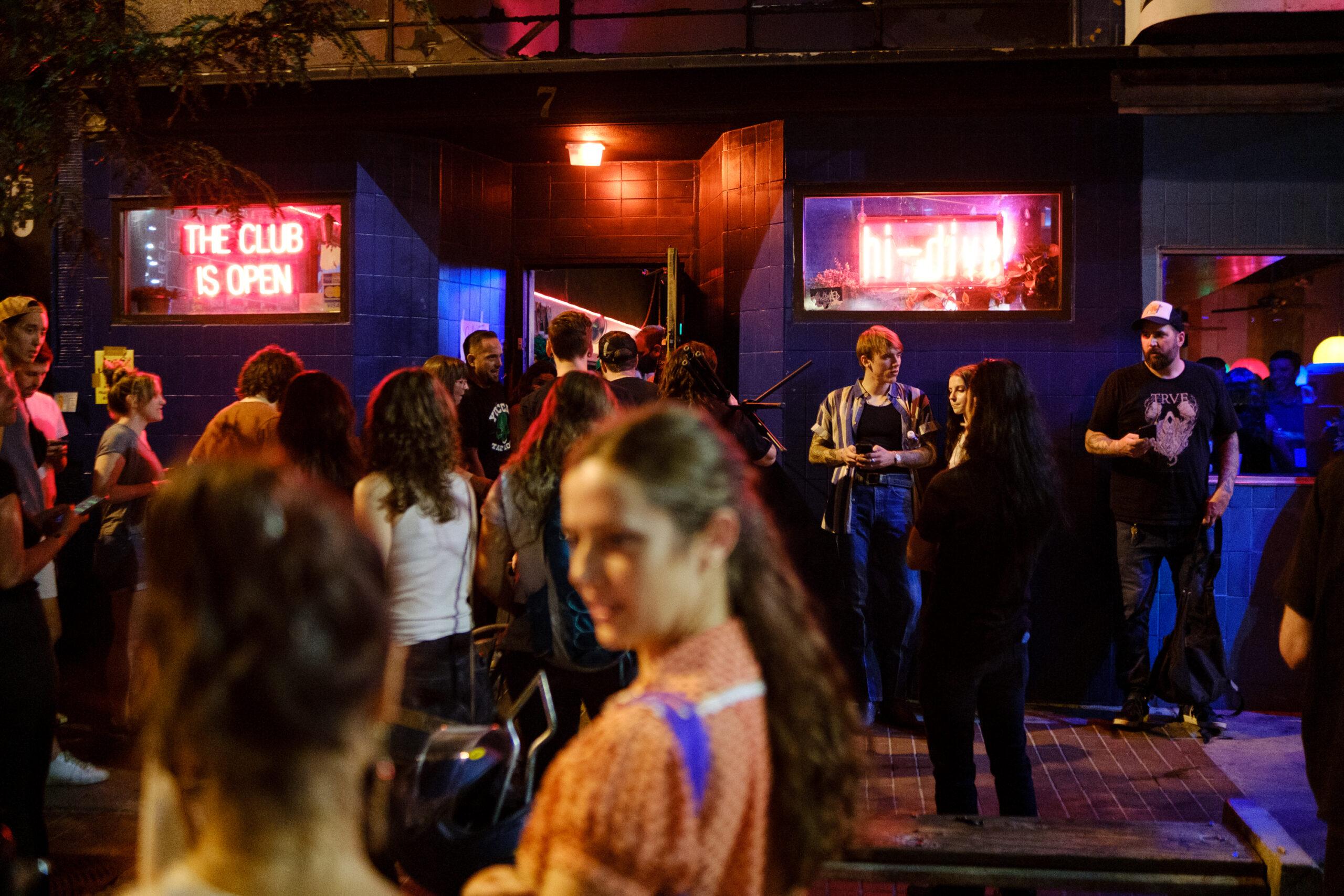A reader recently asked us about "Lao Tzu," the hulking, red metal sculpture by Mark di Suvero that once stood between the Denver Art Museum and Denver's central library. Where did it go?
The short answer? Di Suvero's piece was taken down when DAM started work on its new Martin Building. The project ate into some of the plaza where "Lao Tzu" sat, and the piece no longer fit with the remaining area.
Rory Padeken, the DAM's new contemporary art curator, said it was a challenge to disassemble.
"Mark, he doesn't work from a model. Like things just appear sometimes and happen while you're on site. So back when 'Lao Tzu' was originally installed, that sort of thing happened, where things were just being put together as Mark instructed," he told us. "When they took it apart, you know, nothing was labeled."
Every bolt and panel, carefully documented as the piece came apart, eventually found a new home in museum storage. Padeken said it will remain there for the foreseeable future. There aren't plans to resurrect it at the moment.
This question got us wondering about what else is in DAM's archives behind the scenes. Turns out: quite a lot.

Only four percent of the DAM's collection is ever on display. That means there's so, so much for curators to choose from when they're thinking about a new exhibit.
This is a new gig for Padeken, who's been in Denver for about two months. His bosses already have him working on something big.
Come January, the current contemporary art exhibit on the museum's third and fourth floors will start to come down. Padeken will begin his first curatorial project, a broad look at the collections he's been charged with understanding and presenting to the public.
"It's like eight weeks in, off the ground running," he laughed, "so I've been totally immersed."

Padeken said the museum has never done an overview of its contemporary collection, which includes some 8,000 works. In this context, "contemporary" art means anything made since 1990. He's planning to bring some visitor favorites into the mix, and also a few pieces that the museum has never had on display. In total, he told us, the DAM owns over 70,000 pieces.
For a curator like him, this cornucopia of works offers "endless possibilities" when it comes to designing a show. He won't dig around in the archives, though, since things are inaccessibly spread across multiple warehouses. Instead, he's combing through their digital listings, which are also available to the public.
All of these pieces hidden away begs a question: What is a museum for?
Doug DeNatale, an associate professor of arts management at Boston University, told us museums do more than give tourists something to gawk at. They have fiduciary duties to protect art - or other objects - that are culturally relevant and need to be kept for posterity.
"Historically, museums are meant to be stewards of historic and artistic heritage," he told us.
He said the art world is constantly debating what a museum should be. Things happen all the time that push the conversation forward.

This semester, he'll talk to his class about some art museums who've gotten in hot water when they attempted to sell parts of their collections. In 2017, the Berkshire Museum in Pittsfield, Mass., faced criticism when they announced they'd auction off a couple dozen works, including some by Norman Rockwell and Alexander Calder. Berkshire said they needed the money to stay financially solvent. The Association of Art Museum Directors, which has previously sanctioned museums for trying stuff like this, criticized Berkshire for treating their art like "disposable financial assets" instead of cultural artifacts "held in the public trust."
Things get trickier when it comes to contemporary art, because it's not always clear which pieces will actually be culturally relevant in years to come. Collection managers need to do a little forecasting, and sometimes museums will drop items that don't seem worth the shelf space.
"It's also a curator's job to think about the future," Padeken said. "An artist that might not be relevant now might be in the future."

Padeken loves Mark di Suvero, so he hopes "Lao Tzu" has another moment in the sun. In the meantime, he and his colleagues are mining DAM's collections to meet this moment.
Beauty and relevance are in the eyes of its beholders. When it comes to what emerges from a big museum's archive, those eyes belong to its curators.
While Padeken will pull some popular, major works out from the DAM warehouses for his first exhibit, he's also keeping an eye out for things that speak to this particular point in time.
Curators did this recently with a work called "One Month Late" by Rachel Lachowicz. The installation contains a pair of high heels with a bunch of men's ties hovering above it. Amid the ties is a bent clothes hanger. Everything is coated in lipstick, Lachowicz's signature medium. It's an obvious, striking symbol of America's fight over abortion.
Andy Sinclair, a DAM spokesperson, said "One Month Late" was on display for some time before curators moved it back into storage. Then, when the U.S. Supreme Court struck down Roe V. Wade, they decided to bring it back to the public. Their intention wasn't to make a statement, she said, but to use their archives to make sure the museum reflected the bigger world it belongs to.

"We didn't make a big announcement per se, because it's not about politicizing a moment. It's rather us just creating an opportunity and a moment for our visitors - and even our own staff - to be able to have conversations around what is happening," Sinclair told us. "It's not about imposing that. It's creating the spaces and the moments where people can have those experiences, if they choose to."
Similarly, Padeken will use his growing understanding of the city, and the ways he sees this country and this time, to influence what might emerge from the vast stores of art most people never see.
"The great thing about a permanent collection is that new stories can always be told through different perspectives," he said. "Each curator is constantly engaging and re-engaging with the collection and looking at it in new ways."

Post Script: Not everything in Padeken's show will come out of a warehouse.
"Basic Maintenance," a 6,000-pound steel piece by sculptor Richard Serra, was installed in the DAM's fourth floor decades ago. When it was time to take it out of public view, museum staff decided it was too unwieldy to move. Instead, they built a false wall around the work. It's been hidden where it was first displayed since 2005.
Padeken plans to rip the wall out for his exhibit, which is expected to open to the public in spring, 2023.

Want to learn more about the DAM archive? Check this out:










